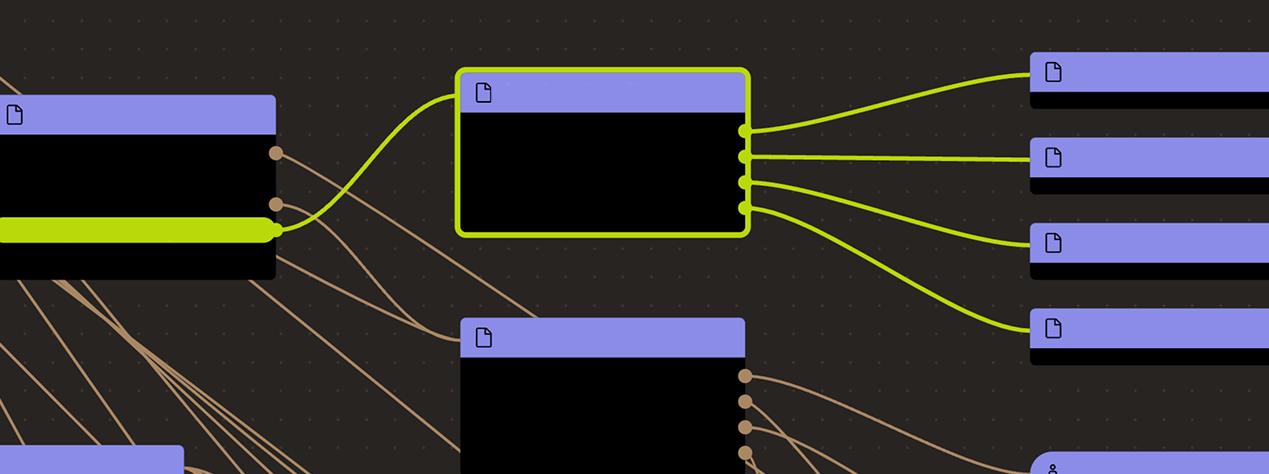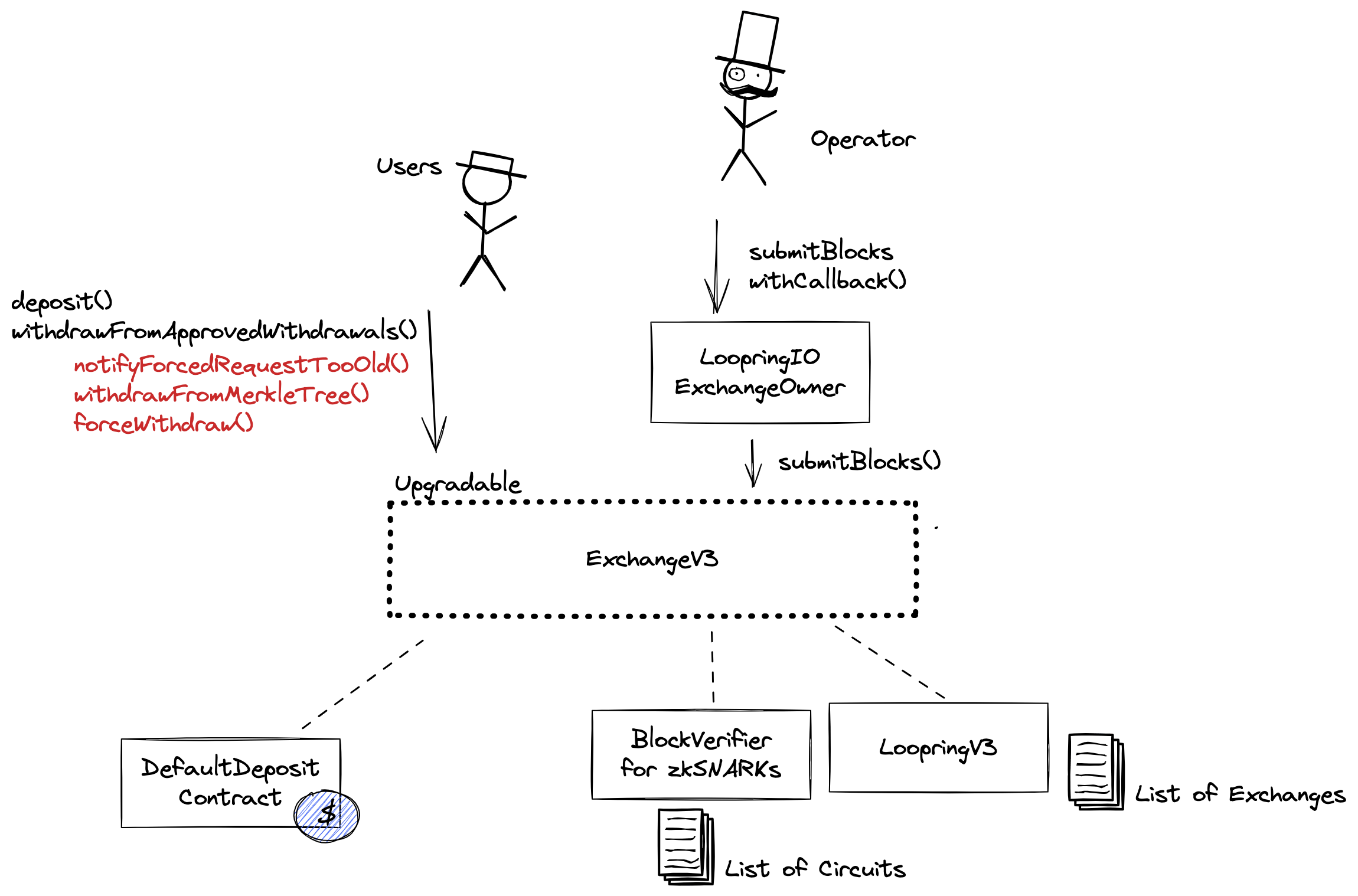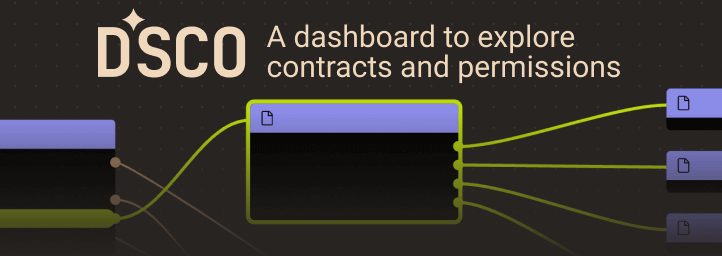Search
Search for projects by name
 DeGate V1
DeGate V1
A system shutdown was triggered on 2025-06-27. This irreversible action freezes the L2 state and allows users to withdraw their funds with the help of the operator. Degate announced that they will withdraw all funds automatically. If the operator does not cooperate, a withdrawal mode can still be activated, allowing users to withdraw their funds on their own by providing merkle proofs.
Badges
About
DeGate is a ZK Rollup enabling a decentralized order book exchange. DeGate smart contracts are forked from Loopring V3.
Badges
About
DeGate is a ZK Rollup enabling a decentralized order book exchange. DeGate smart contracts are forked from Loopring V3.
2023 Nov 12 — 2025 Dec 20
The section shows the operating costs that L2s pay to Ethereum.
2023 Nov 12 — 2025 Dec 20
This section shows how "live" the project's operators are by displaying how frequently they submit transactions of the selected type. It also highlights anomalies - significant deviations from their typical schedule.
2023 Nov 12 — 2025 Dec 21
Shutdown mode activated
2025 Jun 26th
Shutdown mode prevents further state updates and allows users to withdraw their funds.
DeGate Mainnet Beta Redeploy
2023 Nov 13th
DeGate redeploys Mainnet Beta due to a bug, with the ability to upgrade the smart contracts.
Funds can be lost if
Users can be censored if
MEV can be extracted if
Users can force the sequencer to include a withdrawal transaction by submitting a request through L1 with a 0.01 ETH fee. If the sequencer is down for more than 15d, users can use the exit hatch to withdraw their funds. The sequencer can censor individual deposits, but in such case after 15d users can get their funds back.
SNARKs are succinct zero knowledge proofs that ensure state correctness, but require trusted setup.
All of the data needed for proof construction is published on Ethereum L1.
Users have 1mo to exit funds in case of an unwanted regular upgrade. There is a 1mo 15d delay before a regular upgrade is applied, and withdrawals can take up to 15d to be processed.
Users are able to trustlessly exit by submitting a Merkle proof of funds.
Rollup operators cannot compromise the system, but being application-specific might bring additional risk.
Degate provides an orderbook decentralized exchange for spot trading. Arbitrary contracts are not supported.
All data required for proofs is published onchain
All the data that is used to construct the system state is published onchain in the form of cheap calldata. This ensures that it will always be available when needed.
No compression is used.
The system does not begin with a genesis state; instead, it initiates from a zero state, as referenced in CreateEmptyState.
Each update to the system state must be accompanied by a ZK proof that ensures that the new state was derived by correctly applying a series of valid user transactions to the previous state. These proofs are then verified on Ethereum by a smart contract.
Funds can be lost if the proof system is implemented incorrectly.
Groth16 requires a circuit specific trusted setup, so they run their own ceremony. The first phase is run using Powers of Tau ceremony. Some of the instructions on how to regenerate the verification keys can be found here.
Each update to the system state must be accompanied by a ZK proof that ensures that the new state was derived by correctly applying a series of valid user transactions to the previous state. These proofs are then verified on Ethereum by a smart contract.
The system has a centralized operator
MEV can be extracted if the operator exploits their centralized position and frontruns user transactions.
Users can force exit the system
Force exit allows the users to escape censorship by withdrawing their funds. The system allows users to force the withdrawal of funds by submitting a request directly to the contract onchain. The request must be served within a defined time period. If this does not happen, the system will halt regular operation and permit trustless withdrawal of funds.
Users can be censored if the operator refuses to include their transactions. However, there exists a mechanism to independently exit the system.
Forced exit
If the user experiences censorship from the operator with regular exit they can submit their withdrawal requests directly on L1. The system is then obliged to service this request. Once the force operation is submitted and if the request is serviced, the operation follows the flow of a regular exit.
Emergency exit
If the 15d deadline passes and the forced exit is still ignored the user can put the system into Withdrawal Mode, disallowing further state updates. In that case everybody can withdraw by submitting a merkle proof of their funds with their L1 transaction.

Ethereum
Actors:
This address is the owner of the BlockVerifier contract.
Actor allowed to upgrade the ExchangeV3 and DefaultDepositContract contracts. This address is the owner of the following contracts: LoopringIOExchangeOwner, LoopringV3, DefaultDepositContract. Can add or remove block submitters. Can change the forced withdrawal fee up to 0.25 ETH. Can change a way that balance is calculated per contract during the deposit, allowing the support of non-standard tokens.


Ethereum
Main ExchangeV3 contract.
ERC 20 token basic deposit contract. Handles user deposits and withdrawals.
- This contract can store any token.
Contract for setting exchange fee parameters.
zkSNARK Verifier based on ethsnarks library.
This timelock contract is set as the proxyOwner of the ExchangeV3 contract. There is a 1mo 15d time delay for upgrading the contract.
This timelock contract is set as the proxyOwner of the DefaultDepositContract contract. There is a 1mo 15d time delay for upgrading the contract.
